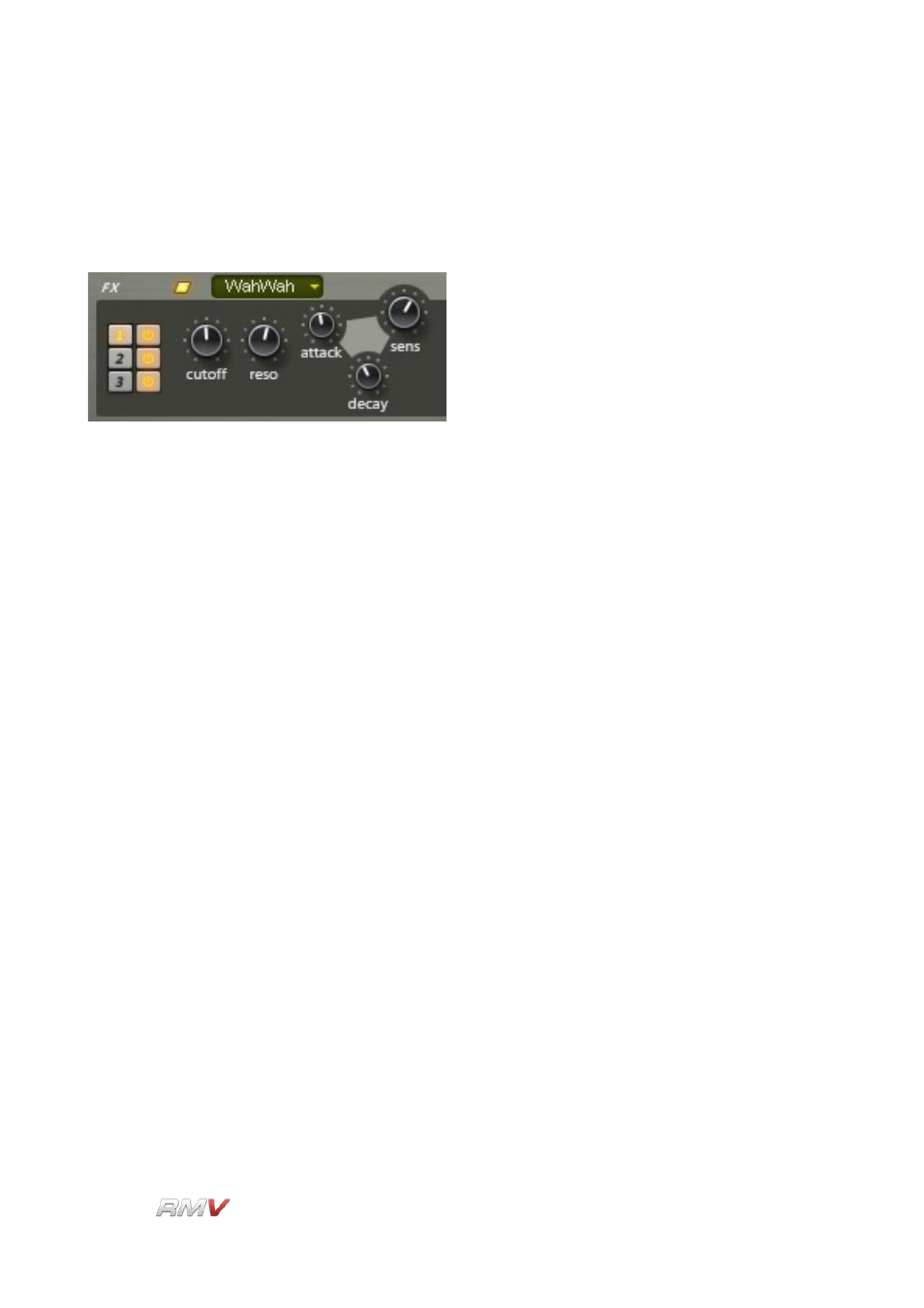Wahwah – LinPlug RMV User Manual
Page 99

Signal Path
WahWah
The WahWah effect is an amplitude-controlled bandpass filter that can be used to produce
vocal-like sounds, particularly “wah-type” sounds.
The WahWah effect contains five controls:
Cutoff:
The Cutoff control is used to set the centre frequency (in Hz) at which
the bandpass filter operates.
Reso:
The Reso (Resonance) control is used to set the amount of
emphasis around the cutoff frequency. Higher settings create a more
pronounced peak in the signal while lower settings produce a flatter
response.
Attack:
The Attack control is used to set the response time of the filter to
changes in the input signal's amplitude. Faster Attack times mean
that the wah effect is triggered more quickly, while slower Attack
times introduce a delay before the wah effect is produced.
Decay:
The Decay control is used to set the recovery time of the filter after
the input signal's amplitude has changed. Faster Decay times mean
that the wah effect returns to its default value more quickly, while
slower Decay times mean that the wah effect returns to its default
value more slowly.
Sens:
The Sensitivity control sets the degree to which the input signal's
amplitude affects the filter cutoff frequency. Lower values produce a
less-pronounced wah effect, while higher values produce stronger,
more vocal-like wah sounds.
LinPlug
Reference Manual 5.0.1
99